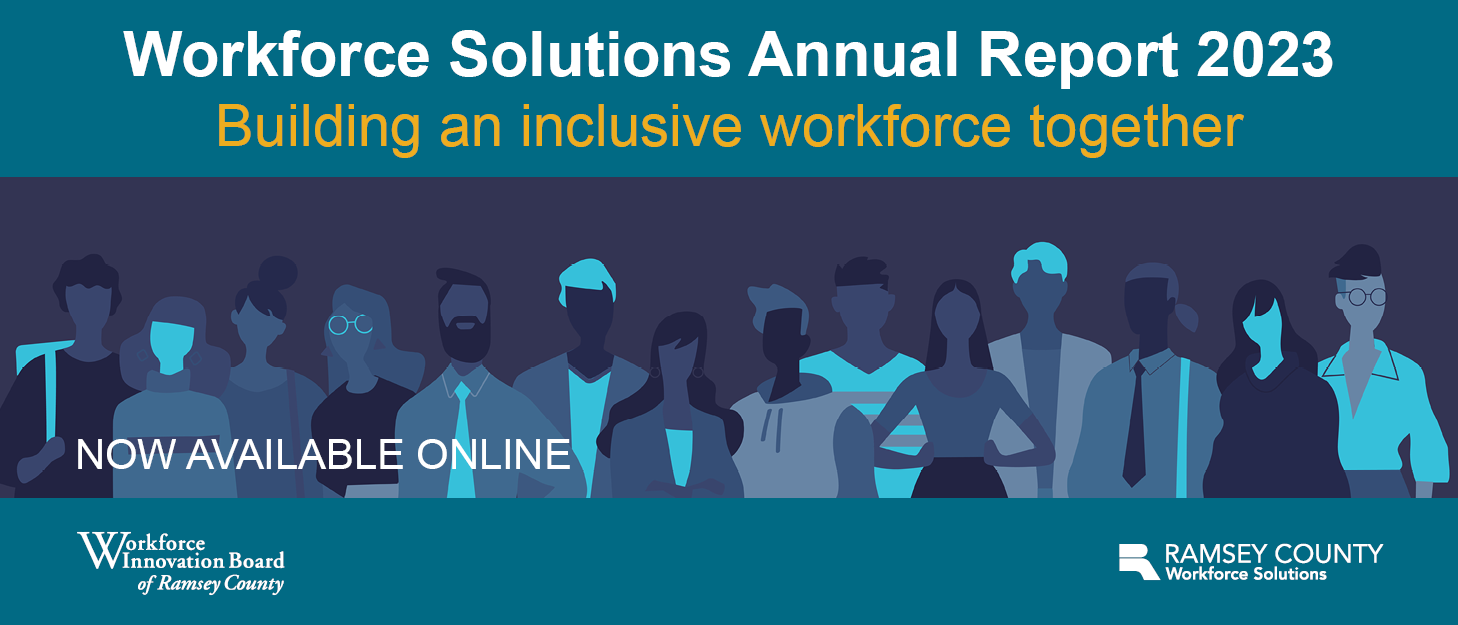Workforce News
Early Childhood Education & Childcare Workforce Challenges and Opportunities
23 February 2021
Early Childhood Education and Childcare Services face a talent supply problem—not a demand one. Even before the pandemic, demand for childcare services exceeded the available supply of both provider institutions and talent. Although these occupations make up a small portion of Ramsey County's workforce, representing about 1% of all employment in the county, early education and care roles are critical to getting people back to work during the post-pandemic economic recovery.
As of the third quarter of 2020, an estimated 3,441 people work in Ramsey County in early education and care roles. These roles include Childcare Workers, Preschool Teachers, Education and Childcare Administrators (preschool and daycare), and Special Education Teachers for preschools. Unemployment in Ramsey County early childhood roles sits at about 8.8%, compared to 6% across all positions as of the third quarter of 2020. Over the past five years, employment in early childhood education and care roles has increased by about 1.1% annually. The greatest growth is among Special Education Teachers in preschools (5.0% annual growth), though in small volumes and with low openings due to turnover.
Analysis
The Challenge of Talent Attraction to Early Childhood Education and Childcare
Early Childhood Education and Childcare Services' core challenges are similar to problems faced in the K-12 education workforce—such as low compensation, overwork, and stress. However, student-teacher ratios, inconsistent workforce training requirements, lack of a clear career growth trajectory, turnover, and limited planning time are particularly exacerbated in the early childhood sphere.
- Low Compensation: The average annual wage for Childcare Workers in Ramsey County is $28,200 per year for those employed based on 2019 data (RTT, Chmura based on BLS). The median advertised wage for Childcare Workers in Ramsey County as of February 2021 was about $31,800 per year—about $2,000 higher than the national average (Gartner). These wages fall well below MN DEED's cost of living for a single person living alone in Ramsey County ($33,156/year), let alone an adult with one child ($60,996/year). Almost no local housing stock would be considered affordable to an individual on a Childcare Workers' average salary ($700 or less per month at 30% of $28,200).
- Inconsistent Workforce Training Requirements: The workforce in entry-level Childcare Worker positions tends to have higher educational background than required by the position. While most Childcare Workers employed in Ramsey County as of 2020Q3 have at least some college experience (67.5%), 80% of job postings require a high school diploma or less. Their area of education may or may not be related to the Early Childhood Education or Childcare fields (RTT, ACS 2019; BLS 2020).
- Lack of Career Growth Trajectory: Diversity in Early Childhood Education and Childcare Services positions is concentrated in the most entry-level, lower-paying occupations, and absent in advanced roles. There is no clearly defined pathway for growth from entry-level Childcare Worker roles into administrative or formal education positions within K-12 systems, limiting the advancement of diverse talent in this field.
- High Turnover: An estimated 14% of all Childcare Worker talent employed in Ramsey County as of 2020Q3 will need to be replaced due to turnover, retirements, and other job changes or exits, plus an additional 3.5% growth possible as the region looks toward economic recovery. In all, this is about 381 total new Childcare Workers needed to meet local demand by 2021Q3 (RTT, Chmura based on BLS).
Recommendations
Even pre-pandemic, the shortage of early childhood education and care providers was a pressing issue statewide. To drive economic growth, meeting the need for more childcare centers could require increased investment in new childcare centers and workers. In a 2013 multinational study on childcare, Bonoli found that more government spending in childcare encourages more women to enter the labor market (Bonoli, 2013).
Redirecting talent recently out of work in the Hospitality and Tourism industries due to the impacts of the COVID-19 pandemic toward entry-level childcare positions may be an effective strategy to address the shortage of early education and care providers. Employers looking to recruit talent from these industries will be most successful if they can offer flexible scheduling and attractive benefits.















